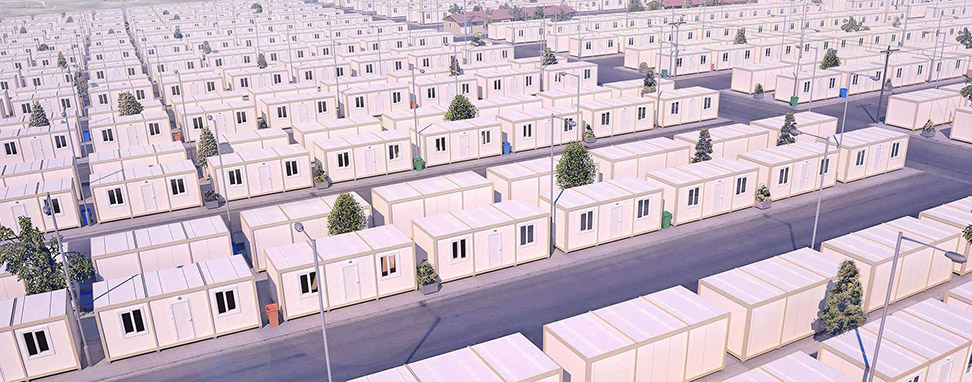With the acceleration of urbanization and the continuous improvement of people's requirements for living quality, traditional construction methods have gradually revealed many disadvantages such as long construction period, high cost, and serious waste of resources. At this time, a more efficient and greener housing solution-Prefab Homes (prefabricated houses) is attracting more and more attention and favor from countries and regions. It not only provides modern people with an ideal living choice, but is also quietly changing the way the entire construction industry operates.
Prefab Homes, or prefabricated houses, refers to a form of construction in which the structural components of a house (such as walls, floor slabs, roofs, etc.) are prefabricated in a factory and then transported to the construction site for assembly. Unlike the traditional "building from the foundation" method of building a house, Prefab Homes emphasizes standardized, modular and assembled construction, which greatly improves construction efficiency and quality control.
Short construction period and high efficiency
Completing most of the construction links in the factory greatly shortens the on-site construction period. A medium-sized Prefab Home project usually takes only weeks to months from design to completion.

Energy saving and environmental protection, reducing waste
Factory production reduces material waste and construction noise, and the use of resources such as water and electricity is more controllable. Some Prefab Homes are also equipped with solar energy systems and rainwater recycling equipment to achieve green and sustainable living.
Flexible and diverse, modern design
Modern Prefab Homes break through the previous "rigid" and "single" impressions. The styles range from minimalist modern, Nordic style, to country villas and industrial style, meeting different aesthetic and functional needs.
Controllable quality and transparent cost
All components are precisely manufactured in the factory, and the quality is easier to control. At the same time, since most materials and process estimates are clear, the overall cost is more controllable, reducing the hidden costs during the construction process.
The use scenarios of Prefab Homes are not limited to private residences. Today, they are widely used in commercial buildings, tourist resorts, emergency rescue, school dormitories and other scenarios. For example:
Building employee dormitories in remote areas;
Quickly building environmentally friendly holiday homes in natural scenic spots;
Constructing rapid resettlement houses in post-disaster areas;
Even for temporary construction needs such as military camps and hospitals.
At present, the United States, Germany, Japan, Sweden and other countries have implemented the Prefab Homes project on a large scale. China, India, the Middle East and other places have also begun to apply it to affordable housing, rural housing renovation and new urbanization construction.
With the continuous integration of 3D printing technology, smart homes and environmentally friendly new materials, Prefab Homes is moving towards a new era of intelligence, greening and personalization. Especially under the guidance of the goals of "carbon neutrality" and "sustainable development", the future market potential of prefabricated buildings is huge.
Prefab Homes is not only a way of building a house, but also represents a more efficient, environmentally friendly and personalized life concept. It provides new possibilities for modern people who pursue convenient and high-quality life, and also brings new development directions to the global construction industry. It can be foreseen that with the advancement of technology and the strengthening of policy support, Prefab Homes will play an increasingly important role in the future residential field.








